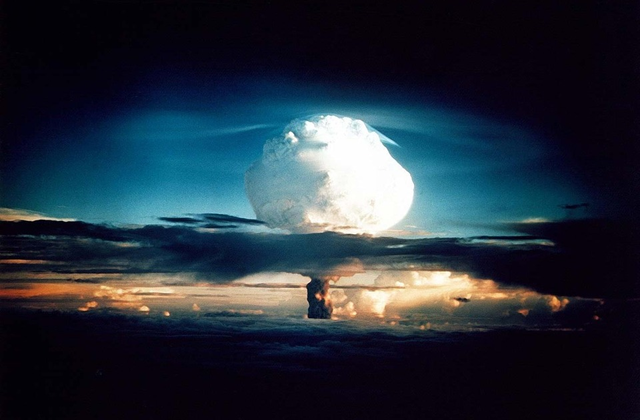What was detected at 01:30:01 (UTC), 6 January 2015, as a magnitude-5.1 tremor in North Korea, is believed to have been the result of testing a hydrogen bomb.
The approximate epicentre was somewhere to the east of Paegam-rodongjagu, in what is believed to be the North Korean government’s Punggye-ri nuclear testing facility.
Reports from the state-run North Korean television news have proclaimed that it was the hermit kingdom’s first successful test of a hydrogen bomb, announcing:
“With the perfect success of our historic H-bomb, we have joined the rank of advanced nuclear states.
“The latest test, completely based on our technology and our manpower, confirmed that our newly-developed technological resources are accurate and scientifically demonstrated the impact of our miniaturised H-bomb.”
U.S. Geological Survey (USGS), which maps earthquakes and seismic activity worldwide, places the tremor at surface depth, located at 41.305°N 129.039°E (latitude and longitude). The same location as previous nuclear tests by North Korea which occurred in 2006, 2009 and 2013.
A South Korean official from the Korea Meteorological Administration (KMA) stated:
“We suspect a man-made earthquake, and are analysing the scale and epicentre of the quake with the geoscience and mineral resource institute of South Korea.”
The China Earthquake Networks Center (CENC) suspected an explosion was related to the seismic activity, placing the earthquake in North Korea at 41.30°N 129.10°E.
Those in the Japanese government suspected it may have been a nuclear test.
Governments within the international community have largely condemned the nuclear test; and are now amongst those outside of North Korea attempting to determine whether it was in fact a hydrogen bomb that was detonated.
Utilising nuclear fusion (compared to nuclear fission), a hydrogen bomb can be thousands of times more powerful than an atomic bomb.
North Korea, offered the following statement:
“As long as the vicious anti-North policy of the US persists, we will never stop development of our nuclear program.”
The nuclear test was apparently personally ordered by Kim Jong-un, only two days out from his birthday.
While North Korea is claiming to adhere to its strict no-first-use policy, it continues to pursue advanced nuclear weapons capability in the name of defending itself.
Although the earthquake was confirmed and believed to have genuinely been the result of a North Korean nuclear weapon test, it’s still unclear whether it truly was the result of detonating a hydrogen bomb or if all the official North Korean talk of their historic miniaturised H-Bomb is merely more propaganda to please leader Kim Jong-un.
 uthinki Considered Opinion?
uthinki Considered Opinion?



